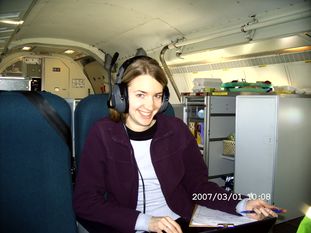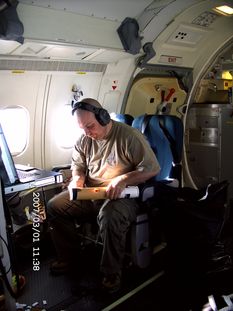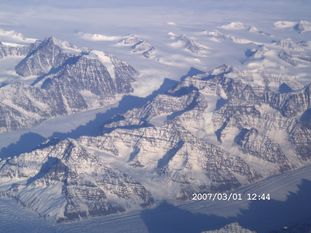

|
|
|||
|
|
|||
|
|
|||
|
|
|||
|
|
|||
|
|
|||
|
|
|||
|
|
|||
 |
|||
Thursday 1st -Sensitive Areas, Barrier Winds and Lee Cyclones |
After a week during which the project was more IFDex than GFDex, conditions finally changed and we started to see evidence of how Greenland affects the flow around it and produces the weather phenomena such as barrier winds and lee cyclones that we have come here to study. This left us with a hard decision to make – which of three options made the most interesting case study? After much deliberation the decisive scientists picked…all three! Flight B273 now had multiple aims:
|
||||
The flight didn’t get off to a good start when the second dropsonde released from the aircraft failed to give any data until it was nearly at the surface. The third did the same, as did its replacement released shortly after. The entire flight had been planned to be flown at a height of between 26,000 – 29,000ft, dropping sondes as we went, so malfunctioning dropsondes spelt disaster. As dropmaster Stu hypothesised that there could be a problem with the entire batch of dropsondes, the scientists on board considered their options. Plan a) go home; plan b) descend to low levels and use the instruments on board the aircraft to collect data on the barrier winds and lee cyclone or plan c) try one more dropsonde to make certain. In the midst of this chaos, dropmaster Stu had a brainwave – to unpack and then repack the parachute for each dropsonde before launching it. Problem solved, and panic over, we carried on the flight track dropping sondes as planned. |
||||
A surprise was in store for project leader Ian Renfrew after everyone had returned to the hotel after the flight. His attempts to conceal his birthday had been thwarted by his wife, who tipped off the GFDex crew! The birthday cake and wine, enjoyed by all, were in no danger of attracting the other guests at the hotel, who scared away by our tuneful rendition of ‘Happy Birthday’ to Ian. The celebrations were reluctantly called to a temporary halt, in order to complete some flight planning, before being continued in the evening at the local fish restaurant. Happy birthday Ian!
|
||||


